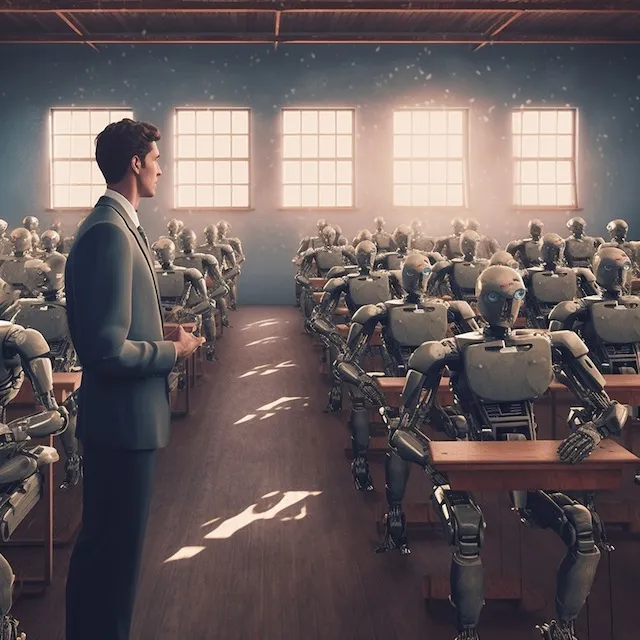Detecting AI in the Classroom

In the land of academia, where the pen is mightier than the sword, an invisible battle is being waged. The adversaries? Artificial Intelligence (AI) and educators. The weapon of choice? AI-generated essays.
On one hand, we have AI models like OpenAI’s GPT-3, capable of producing human-like text that is increasingly difficult to distinguish from the real deal. On the other, educators and institutions are arming themselves with AI detectors designed to identify AI-written papers. These detectors, however, are not without their flaws.
A classifier developed by OpenAI, for instance, accurately identifies only 26% of AI-generated text, while incorrectly labelling human prose as AI-generated 9% of the time. This misidentification, known as a false positive, could lead to undeserved penalties for students who, in reality, have not enlisted AI’s help.
More promising AI detectors are emerging, like GPTZero, developed by a Princeton University student. This app identifies AI authorship based on two factors: perplexity and burstiness, which measure the complexity and variation of a text. Yet, even this more sophisticated tool can be led astray, with methods to prompt AI to produce text with high degrees of perplexity and burstiness already shared on platforms like YouTube.
The resilience of AI and its ability to adapt to detection methods is pushing the boundaries of this battle. AI text scrambling websites are mushrooming, offering tools that paraphrase AI-generated text with synonyms, making detection significantly more challenging.
In response to these ever-evolving strategies, one proposition is to watermark AI-written text, invisible to human readers but detectable by software. This involves allowing the AI to select words only from a “whitelist”, differentiating AI text from human-written text which would likely include “blacklisted” words.
As the AI arms race accelerates, a question arises: should our education system adapt to this new reality? There is a growing consensus that we should focus on aspects where humans excel and AI does not. Creativity, abstract thinking, and transfer learning are some of the areas where humans still hold the edge over AI.
The future of education could be a model that strengthens creativity and encourages a “far transfer” of knowledge, applying abstract concepts from one domain to another. Experiential learning, which merges classroom knowledge with real-world experience, might play a crucial role in this transformation.
As AI continues to evolve, our ability to adapt and learn new skills will be a critical advantage. Education systems should continue to nurture this ability, focusing on fostering mental flexibility and creativity in learners. “Our potential to master far transfer is our competitive advantage over intelligent machines,” as Prof. Aoun writes in his book Robot-Proof.
In the end, the silent war in the classrooms may well be a wake-up call to revolutionize our education system. Instead of training laborers, a robot-proof education could train creators, arming students with the skills needed to outwit not just AI essay-writers, but the wider challenges of an AI-transformed world.
In this battle of wits, it’s not about who has the more sophisticated tools, but who can adapt, learn, and think creatively. And in that field, humans still reign supreme. The key to winning this war may lie not in the might of our AI detectors, but in the minds of our students.
In the game of cat and mouse between AI and educators, the ultimate victor may not be the one with the most advanced AI, but the one who can nurture the creativity and adaptability that are uniquely human. The pen, after all, is only as powerful as the mind that wields it.
For now, the classrooms of Europe are the battlegrounds of this fascinating struggle. The outcome remains uncertain, but one thing is clear: this is a battle worth watching. The future of education – and indeed the future of work – may well be shaped by its outcome.